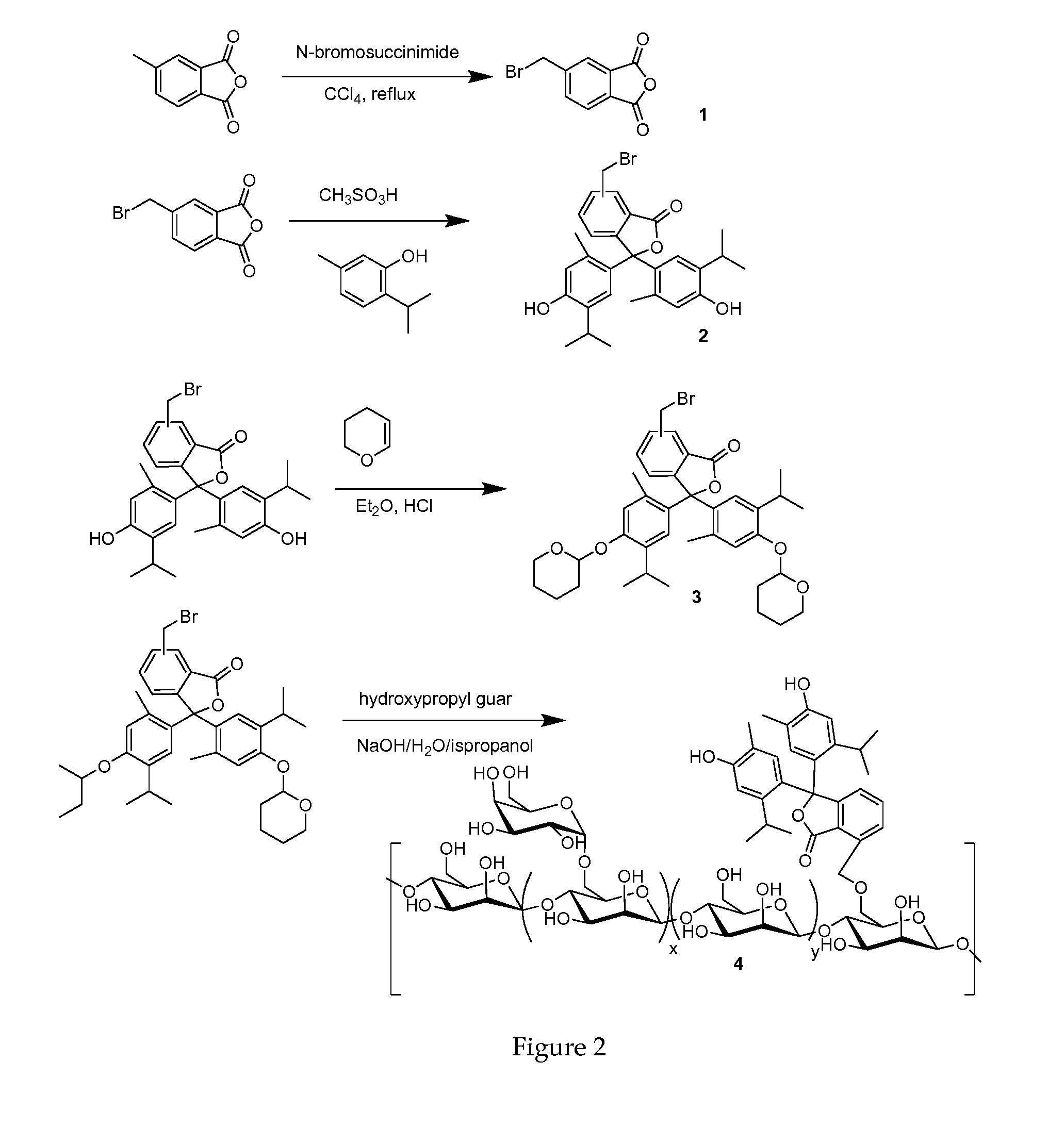Color-changing cleansing compositions and methods
a technology of compositions and colors, applied in the field of color-changing cleansing compositions and methods, can solve the problems of not taking the appropriate time to effectively clean hands, and the hands are often washed for too short an amount of time, so as to avoid the spread of infective agents, prevent infection, and effectively clean hands
- Summary
- Abstract
- Description
- Claims
- Application Information
AI Technical Summary
Benefits of technology
Problems solved by technology
Method used
Image
Examples
example 1
[0422]
Stepanol ABHS-15C 20 go-Cresolphthalein0.5 gSodium hydroxide0.11 g DI water77.79 g Sodium chloride1.5 gPreservative0.1 g
[0423]A mixture of Stepanol ABHS-15C, fragrance and DI water was stirred until homogeneous. o-Cresolphthalein was added to the mixture followed by addition of sodium hydroxide. The viscosity was adjusted by addition of sodium chloride. Preservative was added and the mixture was stirred for 2 hours (preferably overnight).
example 2
[0424]
Stepanol DCFAS-F / N3.5 gNinol 40CO 1 go-Cresolphthalein0.5 gSodium hydroxide0.11 g DI water93.29 g Sodium chloride1.5 gPreservative0.1 g
[0425]A mixture of Stepanol DCFAS-F / N in DI water was stirred until completely dissolved and homogeneous followed by addition of Ninol 40CO. o-Cresolphthalein was added to the mixture followed by addition of sodium hydroxide. The viscosity was adjusted by addition of sodium chloride. Preservative was added and the mixture was stirred for 2 hours (preferably overnight).
example 3
[0426]
Bio-Terge AS-4015.4 gSteol CS-460 9 gAmphosol CA 4 gNinol 40-CO 1 gThymolphthalein 0.5 gSodium hydroxide0.09 gDI water68.41 g Sodium chloride 1.5 gPreservative 0.1 g
[0427]A mixture of Bio-Terge AS-40 in DI water was stirred until homogeneous followed by addition of Steol CS-460, Amphosol CA and Ninol 40-CO. Thymolphthalein was added to the mixture followed by addition of sodium hydroxide. The viscosity was adjusted by addition of sodium chloride. Preservative was added and the mixture was stirred for 2 hours (preferably overnight).
PUM
| Property | Measurement | Unit |
|---|---|---|
| time | aaaaa | aaaaa |
| time | aaaaa | aaaaa |
| color | aaaaa | aaaaa |
Abstract
Description
Claims
Application Information
 Login to View More
Login to View More - R&D
- Intellectual Property
- Life Sciences
- Materials
- Tech Scout
- Unparalleled Data Quality
- Higher Quality Content
- 60% Fewer Hallucinations
Browse by: Latest US Patents, China's latest patents, Technical Efficacy Thesaurus, Application Domain, Technology Topic, Popular Technical Reports.
© 2025 PatSnap. All rights reserved.Legal|Privacy policy|Modern Slavery Act Transparency Statement|Sitemap|About US| Contact US: help@patsnap.com



